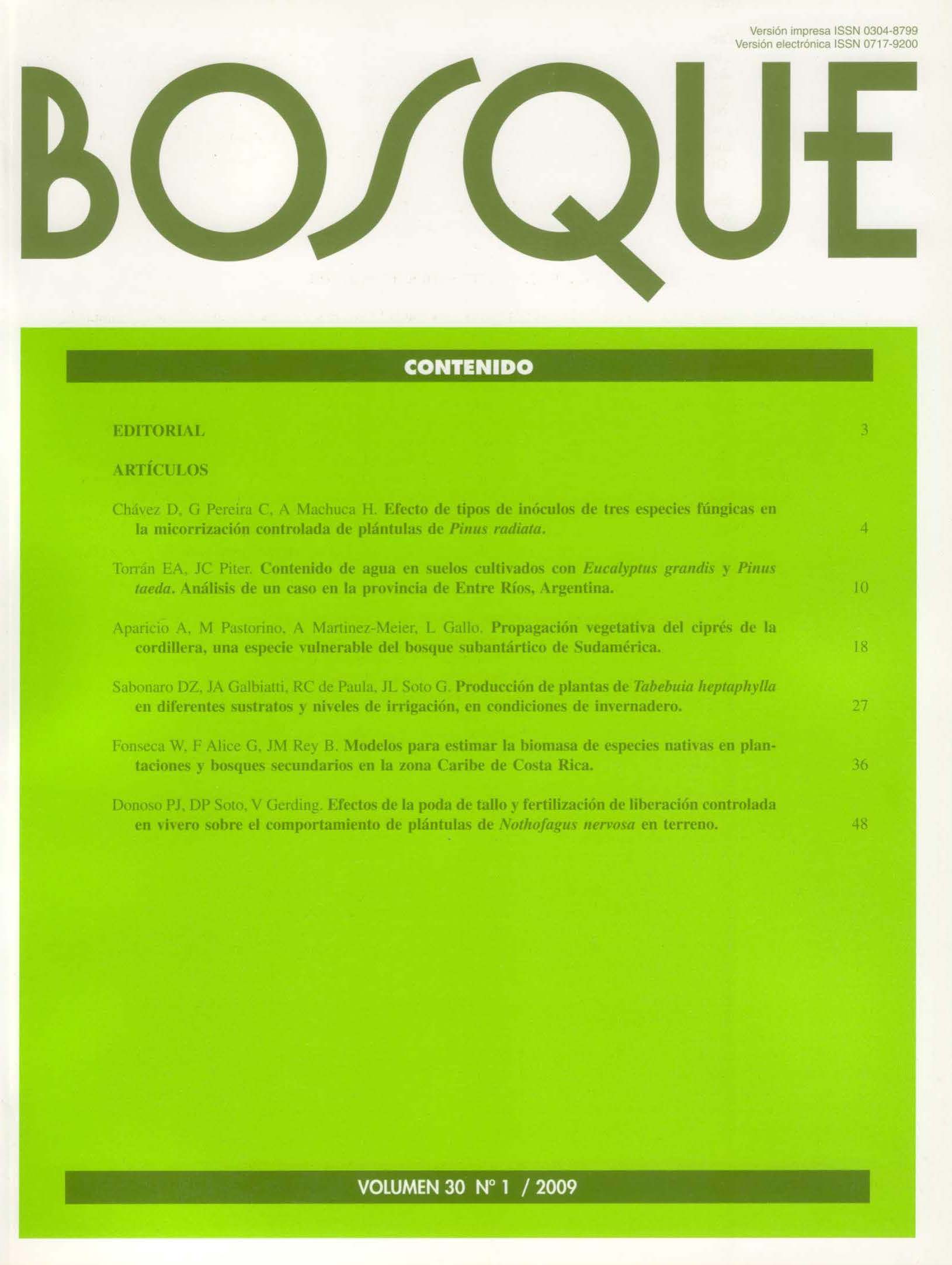Effect of inoculum type of three fungal species on the controlled mycorrhization of Pinus radiata seedlings
Main Article Content
Abstract
In the present study different types of inoculum: sporal (SI), solid micelial (SMI), and liquid micelial (LMI) of ectomycorrhizal fungi were evaluated on the controlled mycorrhization of Pinus radiata seedlings growing under experimental nursery conditions. The fungal species were Rhizopogon luteolus, Suillus bellinii and Suillus luteus collected from Pinus radiata plantations in the province of Bíobío, in the VIIIth Region of Chile. The fungal species were cultivated on the solid medium MMN (modified Melin-Norkrans), pH 5.8, and incubated for 30 days to produce the sources of micelial inoculum under liquid (LMI) and solid (SMI) conditions. To obtain the SI the carpophores collected in field were cleaned (previous identification in the laboratory) and then crushed in blender (1000 rpm) containing desionized water. The different types of inoculum were kept in glass bottles, at 4° C in darkness, until their use. The results indicated that the effect of the type of inoculum changed according to the fungal species studied. The best results after eleven months for the plant mycorrhization were observed when SMI and LMI obtained from R. luteolus and LMI from S. luteus were used. The species S. bellinii did not present differences in the mycorrhization reached by the plants with the different types of inoculum. Among three species of ectomycorrhizal fungi studied, R. luteolus showed the biggest effects on the growth of the P. radiata seedlings in nursery.

